Increased body temperature associated with physiological or pathological reasons. Parents may find their child has a high score without symptoms. But an increase with additional signs is allowed. A reading of 39 degrees can be dangerous for a child, so therapy should be started.
Record content:
- 1 Reasons for the appearance
- 2 Possible diseases
- 3 Diagnostics
- 4 When to see a doctor
- 5 Prophylaxis
-
6 Treatment methods
- 6.1 Medications
- 6.2 Traditional methods
- 6.3 Other methods
- 7 Possible complications
- 8 Video about high fever in a child
Reasons for the appearance
Temperature 39 in a child (without symptoms or with their presence) can appear for various reasons.
Namely:
- Weakened immune system An increased rate lasts 2 - 3 days without additional symptoms, and then various signs appear - a runny nose, cough, sore throat.
- Overheating. If a child under 1 year old is in a hot room for a long time, the body temperature can rise to 39 degrees. But the symptom does not necessarily manifest itself in the summer, some notice it in the winter season. Hyperemia is short-term, the condition is normalized after the use of drugs with antipyretic effects. In children over 1 year old, the thermoregulation system is better formed; due to overheating, the temperature does not rise much.
-
Teething in children under 1.5 years of age. The indicator may be exceeded without additional symptoms. The temperature of 39 degrees is due to the eruption of canines, molars and premolars, as well as if several teeth are cut at once.

The article discusses the reasons for the increase in temperature in a child to 39 without other symptoms. - Introduction of vaccination. The vaccine can raise the body temperature up to 39 - 39.5 degrees. Sometimes the indicator exceeds the specified values. Most often this is noticeable in children under 1 year old. Some vaccines cause a fever 24 hours after they are given, while others cause a fever within 7 to 14 days. The duration of the symptom is from 2 hours to 3 days. Most often (in 95% of cases), the temperature rises after DPT - a combined vaccine against diphtheria, tetanus and pertussis.
- Allergic reaction. When exposed to any allergen, histamine is produced. For example, animal hair, plant pollen, medicine. As a result, the immune system is activated. Therefore, with the manifestation of allergies, the body temperature may rise to 39 degrees. There is a high likelihood of the onset of the symptom in infants under 1 year of age, since during this period the child is breastfed and new foods are introduced.
- Formation of thermoregulation. The temperature may rise due to a factor. This is rare, but there are such cases. The high temperature is short-term.
Possible diseases
A temperature of 39 in a child (without symptoms or with additional signs) may indicate various pathologies. The table shows the reasons why a high rate is accompanied by symptoms.
| Name | Description |
| Diseases of the oropharynx of a viral and bacterial nature - tonsillitis, pharyngitis, laryngitis | In addition to fever, redness and pain in the throat appears. |
| Respiratory Viral Infections - Influenza | Additionally, there is nasal congestion, lethargy, and lack of appetite. An increase in temperature to 39 degrees is most often observed with flu. A common cold is not accompanied by a high rate |
| Intestinal infection | An increase in the indicator may occur in a child due to intolerance to a certain product or food poisoning |
| Appendicitis or serious gastrointestinal pathology | There is acute pain in the abdominal region |
| Viral infections - smallpox, rubella, measles | A rash on the skin is accompanied by a high fever. Most often, the rash spreads from top to bottom. |
| Diseases of the genitourinary organs - cystitis, pyelonephritis | Together with high fever, urination is impaired. A child under 1 year old behaves badly, cries during the emptying of the bladder. Older children complain of pain in the abdominal cavity, discomfort can be given to the lower back. Additionally, there is a change in the color of urine |
| Otitis | Severe discomfort in the ear area. The child constantly touches the place and tilts his head |
| Pneumonia | Shortness of breath appears together with high fever. Additionally, the lips or skin around them turn blue |
| Angina | The appearance of plaque on the tonsils, enlarged lymph nodes, severe pain in the throat |
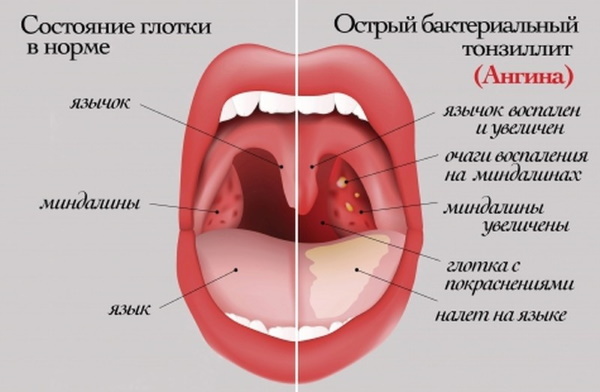
A child may have a high fever without additional symptoms. This condition is rare, but not an exception.
The symptoms are associated with the following reasons:
- Neoplasm. The temperature rises for a long time, at first nothing bothers the child. But then there is lethargy, loss of appetite, fatigue. Additionally, weight is reduced, the skin turns pale.
- Autoimmune pathologies - rheumatoid arthritis, lupus erythematosus.
- Infections - pneumococcal otitis media, bacterial pneumonia.
- Failure in the hormonal background - the condition is typical for adolescence.
- Impaired thyroid function (hyperthyroidism). Hormones are produced in greater quantities. If the disease is started, a thyrotoxic crisis occurs, in which the fever can last for a long time - from 1 week to several months.
- Decreased hemoglobin levels (anemia).
- Diabetes.
Diagnostics
High temperature requires diagnosis. The implementation of measures is necessary so that the doctor can determine the cause of the onset of symptoms.
Diagnostics include the following procedures:
- Delivery of a general analysis of blood and urine. As a result, it is possible to determine the value of indicators important for the body.
- Delivery of a clinical blood test. For example, glucose results can indicate diabetes mellitus.
- Delivery of a swab from the nasopharynx. In another way, the analysis is called bacteriological culture. As a result, it is possible to identify diseases of the respiratory and nervous systems, meningitis.
- X-ray. With the help of the procedure, it is possible to examine the organs. To improve visualization, the patient may be injected with an intravenous contrast agent.
- Ultrasound examination (ultrasound). According to the results, it is possible to identify deviations in the size of organs, a violation of their development.
- Fibrogastroduodenoscopy (FGDS). The abbreviated procedure is called gastroscopy. The gastrointestinal tract is examined using a gastroscope. As a result, various organ pathologies can be identified.
- Electrocardiogram (ECG) - reveals pathologies of the cardiovascular system.
- Magnetic resonance imaging (MRI) or computed tomography (CT). These procedures are the most accurate. According to the results, you can examine in detail the organs and blood vessels. Additionally, MRI and CT are used if a neoplasm is suspected.
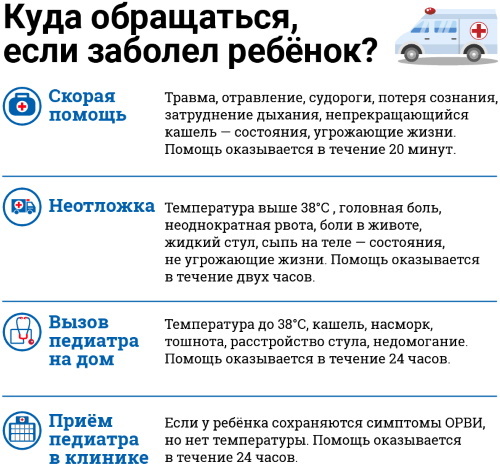
The cost of diagnostics is different, it all depends on the city, organization, list of procedures. Therefore, the price should be found out in a specific clinic. The list of procedures can be changed at the discretion of the doctor.
When to see a doctor
Temperature 39 in a child requires medical attention. Whether symptoms are absent or present. Parents will not be able to independently determine the cause of the condition.
High fever in children is treated by a pediatrician.
But additional help from doctors of other specialization may be required:
- gastroenterologist - deals with gastrointestinal diseases;
- pulmonologist - treats pathologies of the respiratory system;
- cardiologist - deals with the treatment of diseases of the cardiovascular system;
- nephrologist - if the symptom is associated with kidney disease;
- otolaryngologist (ENT or ear-nose-throat) and more.
An urgent call to the medical team is necessary in the following cases:
- any increase in temperature in a child up to 3 months;
- an increase in temperature of more than 38 degrees in a child up to 12 months;
- violation of consciousness;
- prolonged cough (more than 1 min.);
- inspiratory noise;
- labored breathing;
- trouble swallowing;
- convulsions;
- any severe pain - in the abdomen, during urination, and more;
- with independent actions (antipyretic, folk remedies), the temperature does not fall for a long time, that is, the fever persists in a child under 2 years of age for more than a day, and in children older - more than 3 days;
- diarrhea or vomiting profuse, sometimes bile or blood is present in the stool;
- refusal of fluids and food;
- rash on the skin.
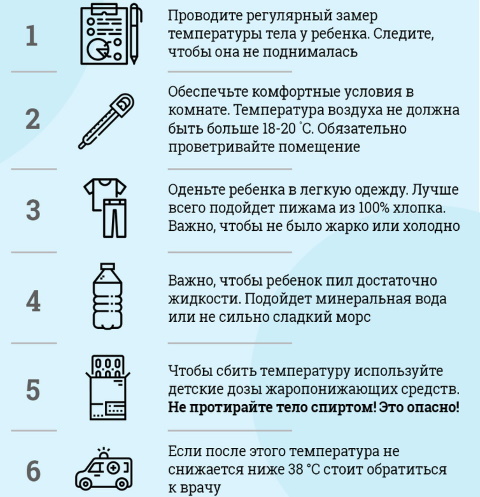
At high temperatures, do not do the following:
- cover the child with a warm blanket or shawl, on the contrary, you need to undress him to panties or a diaper and wrap him only with a sheet;
- rub vinegar into the skin - you need to lightly touch the cover with a pre-prepared solution;
- inhalation;
- massage treatments;
- warming up;
- compresses that have a heating effect;
- forcing the child to eat;
- give cold drinks, since they should only be warm, otherwise the vessels will spasm;
- putting a fan by the bed and blowing the child until the temperature drops - this is wrong, as the likelihood of pneumonia increases;
- a hot bath or shower - as a result, overheating is possible, so it is better to just wipe the child's body.
Prophylaxis
In order to prevent the appearance of a high temperature in a child, it is necessary to adhere to preventive rules. They can help reduce the likelihood of the symptom occurring.
Prevention includes the following rules:
- taking vitamin complexes once a year - this way you can strengthen the immune system;
- treat diseases on time;
- dress for the weather;
- periodically ventilate the room;
- undergo a complete examination of the body once a year.
Treatment methods
The child's temperature 39 (without symptoms or accompanied by additional signs) should be reduced. Most often, doctors prescribe complex therapy. That is, a simultaneous combination of several methods. As a treatment for high fever in children, complex therapy is used, which consists of medicines, folk and other methods.
Many people think that it is not necessary to lower the temperature. Indeed, in some cases, this is correct. For example, if the temperature is febrile (37 - 37.9 degrees) or subfebrile (38 - 38.9 degrees). If you knock down such an indicator, the body will not turn on the protective function.
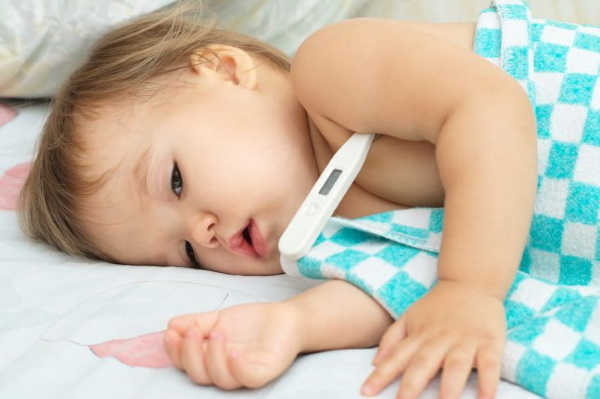
But temperatures over 39 degrees can cause rapid breathing, changes in heart rate. Further, there is a lack of oxygen, if the condition persists for a long time, the work of the central nervous system is disrupted (hallucinations, delirium, convulsions). From the table you can see whether the child's temperature should be reduced by 39 degrees.
| Age category | Description |
| Up to 1 year | In infants, it is imperative to lower the temperature, which is above 39 degrees. Moreover, this must be done immediately. Medication can be used to reduce it. Up to 1 year old, the child's heat transfer is impaired, since the sweat glands are not yet fully developed. Therefore, if you do not bring down the heat, it will rise even higher. |
| 1 - 2 years | Compared to infants, thermoregulation works better at this age. The temperature of 39 degrees can be reduced with the help of medicines or folk remedies. But children can hardly tolerate an increase in the indicator, so there may be seizures. |
| 34 years | High temperature is undesirable for this age, so it should be reduced. Otherwise, the child will be dehydrated and have seizures. |
| Over 4 years old | An increase in body temperature of more than 38.5 degrees is undesirable. In this age category, with a high rate, the heart and respiratory organs are loaded |
| Teenagers | It is necessary to lower the temperature over 39 degrees. In adolescence, a thermoregulation system is formed, but with a high indicator, a change in the water-salt balance is possible, and this is reflected in the brain |
Judging by the table, we can conclude that at any childhood it is necessary to lower the temperature by 39 degrees.
Medications
Medication can help manage symptoms. That is, they lower the temperature and reduce the manifestation of other signs. Popular medications that can be used in children at high temperatures without additional symptoms are shown in the table.
| Classification of medicines | Description | A drug | Release form | Dosing for children | Cost (in rubles) |
| Non-steroidal anti-inflammatory drugs (NSAIDs) | Medications help reduce pain and inflammation, lower fever | Nurofen | Suppositories, suspension | Can be used from 3 months. Dosage depends on the form of release of the drug, you need to clarify the information in the instructions | 90 – 400 |
| Analgesic | Means reduce fever, relieve pain | Tsefekon D | Suppositories 50, 100, 250 mg | It is set individually depending on the age of the child. The average amount is from 10 to 15 mg / 1 kg of weight. The candle should be injected 2 - 3 times a day. The interval between uses should be 4 - 6 hours. The maximum dosage per day is not more than 60 mg / kg of body weight | 30 – 100 |
| Paracetamol | Suspension |
Give the child up to 4 times a day. Single dosage:
|
50 – 100 |
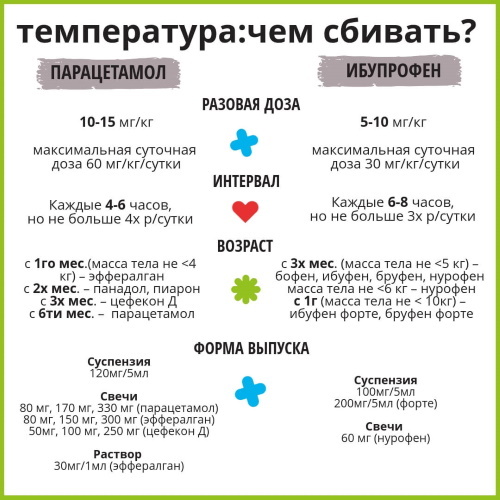
Treatment of additional symptoms is carried out with medication.
Popular drugs:
- Antidiarrheal - Immodium, Loperamide. Medications help relieve diarrhea.
- Antiemetic - Metoclopramide, Domperidone. Means eliminate vomiting.
- Antiallergic - Erius, Claritin. Medicines eliminate the manifestation of allergies.
- Vasoconstrictor drugs - Nazivin, Xymelin. The drugs eliminate the common cold.
- Immunostimulants - Immunal. The group helps to strengthen the immune system.
The list of drugs can be changed at the discretion of the doctor.
Traditional methods
Folk remedies have a herbal composition. Compared with drugs, the likelihood of side effects is reduced. But you can not use only folk remedies. The best effect comes with combined treatment. That is, the use of folk remedies with other methods (drugs, proper nutrition, and more).

Popular herbal recipes for high temperature in children:
- Enema with chamomile decoction. To prepare the product, you need to take 1 - 2 tablespoons. chamomile and 1 glass of hot water. Pour the mixture into a saucepan, put on low heat, remove the container after 5 - 7 minutes. Leave for 20 - 30 minutes, filter through cheesecloth. Dilute the resulting solution to 200 ml with water. Then add 1 - 2 tbsp. vegetable oil, mix thoroughly. Wait until the temperature of the mixture is acceptable (not hot), do an enema. If the child has gastrointestinal pathology, then this recipe cannot be used.
- Camomile tea. To prepare a recipe, you need to take 1 tbsp. chamomile and 200 ml of hot water. Leave the mixture for 2 hours, filter through cheesecloth. Give the child 0.5 cups up to 6 times a day. You need to drink the infusion warm.
- Cabbage compress. Take 1 - 2 sheets of the product, place them in hot water. Next, beat off the leaves with a kitchen hammer. After the juice comes out of the cabbage, you can apply the product to any area of the body except the heart.
- Compress from pine needles. For cooking, you need to take a liter jar of needles, remove the contents from the container, grind with a meat grinder or blender. Add 1 - 2 tbsp. honey. Mix thoroughly, make small cakes. Place one of them on the baby's chest, and the other on the back. The duration of exposure is 15 minutes. The temperature will decrease after 30 minutes. after applying compresses.
- Acetic rubdown. To prepare the product, you should take clean non-carbonated water in the amount of 1 liter and 0.5 tsp. vinegar. Acid must be added no more than the specified value, otherwise burns may remain on the body. Next, fold the gauze in several layers, wet in the resulting mixture, rub the body slowly. It is forbidden to change vinegar to vodka or alcohol.
Other methods
In addition to traditional therapies and medicinal methods, there are other ways to treat a high fever in a child.
Namely:
- regular airing of the room - helps to lower the temperature and clean the room from pathogenic microorganisms;
- add foods rich in vitamins to the child's diet - vegetables, fruits;
- regulation of air humidity - the optimal value is 60%;
- plentiful drinking (water, fruit drink, juice) - the method will help to cope with dehydration due to sweating and remove toxic substances from the body;
- wrapping the child in a damp sheet.
Possible complications
A child's temperature of 39 (without or with symptoms) is a condition that can lead to complications. If you do not treat the symptom, the likelihood of negative consequences increases.
Namely:
- rave;
- seizures that cause severe pain;
- circulatory disorders;
- lowering blood pressure (hypotension);
- a sharp increase in blood viscosity;
- complicated work of the heart and blood vessels - this can cause serious diseases.

A temperature of 39 degrees is dangerous for the following categories of people:
- diseases of the cardiovascular system;
- respiratory system pathology;
- the age group under 5 years old, as there is a high probability of seizures;
- disturbed work of the nervous system;
- diabetes mellitus or disrupted endocrine system.
If a child's temperature rises to 39 degrees, regardless of age, it needs to be lowered. A high score (no symptoms or accompanied by signs) may indicate physiological (overheating, allergies) or pathological causes (diabetes, asthma).
Therefore, you need to find out why the symptom appeared. To do this, you should conduct a complete examination of the body, contact your doctor. A specialist will diagnose and prescribe treatment. As a therapy, drugs, folk and other methods are used. The most important thing is to follow the recommendations of a specialist.
Video about high fever in a child
What to do with a high temperature in a child:



